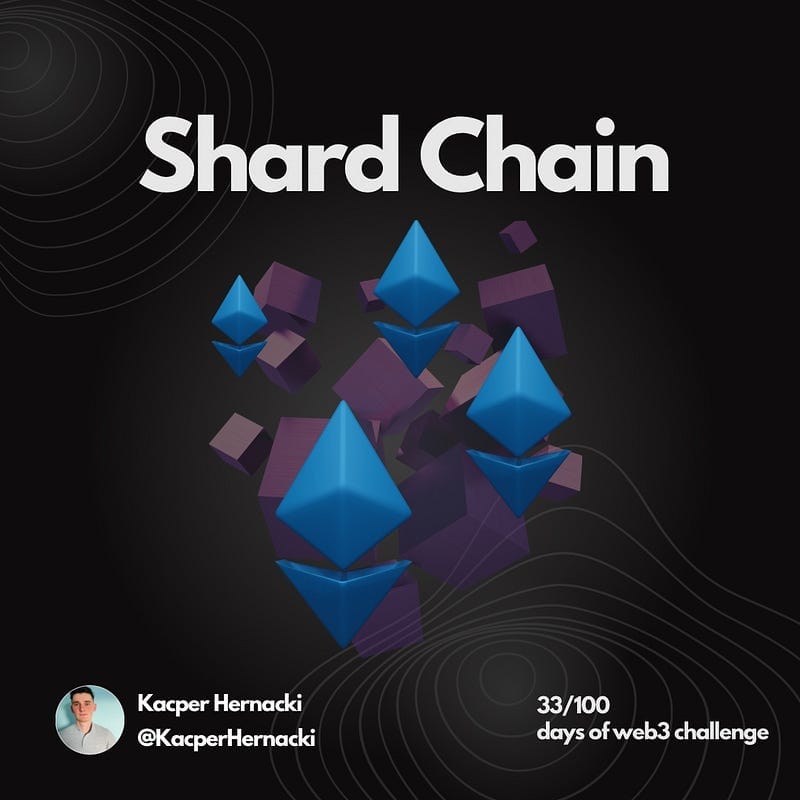Shard chains — security, scalability and decentralization achieved simultaneously
It is commonly known that Ethereum 2.0 will reduce traffic and increase transactions per second, but how it will be done?

It is commonly known that Ethereum 2.0 will reduce traffic and increase transactions per second, but how it will be done?
While reading Ethereum 2.0 roadmap, there is mentioned something like a shard chain or sharding. If you do not know anything about it, this material is for you.
Agenda:
- Intro,
- Definition,
- How it works,
- Blockchain Trilemma,
- Conclusion.
Definition
To explain shard chains in the easiest way, it is necessary to present how sharding works.
“Sharding is the process of splitting the Ethereum network into multiple parts, called shards.”
Sharding can reduce congestion and increase rate of transactions per second. Shard chains are splitted horizontally to the core blockchain (in eth 2.0 — beacon chain)
How it works
Basically sharding process will be described basing on Ethereum 2.0 example.
Ethereum network can now allow to max 15 transactions per second, what is a very small amount, comparing to Visa.
Let’s imagine the traffic on Ethereum as a congestion on the road. Each car (transaction) is waiting and moves extremely slow. Traffic is longer and bigger, new cars (transactions) are joining, what’s make it even worse to move.
Assuming that immediately, beside main road are built additional 63 ways, traffic will disappear in the blink of an eye. The same is proceeded with Ethereum network. There are added 64 shard chains, what will increase capacity dramatically.
Each chain stores information about blockchain and adds new transactions. However, shard chains does not execute them.
What is very beneficial, nodes in shard chains do not store updated version of all network, they only cumulate data from own shard chain.
Another big feature is the process how validators are selected. Mainly, beacon chain which dispose all validators in the network, choose them randomly (for example 100 validators) and attach them to concrete shard chain. It results with extremely high security level.
Blockchain trilemma
The purpose of mentioning this is to show, how sharding can skip this huge problem and provide solutions for each issue.
Blockchain trilemma is basing on the functioning of the decentralized network. It is impossible to achieve: security, scalability and decentralization simultaneously.
Increasing level of security, causes adding new blocks difficult, what makes less transactions and less miners. When miners amount is low, only the richest ones can support network, then network is more centralized.
Sharding solves this trilemma perfectly, multiple chains add transaction with randomly chosen validators, what increases security. It is still decentralized and scalability is in the much higher level.
Conclusion
Shard chains are very revolutionary. At the beginnings, blockchain was seemed like it is impossible to provide all scalability, security and decentralization simultaneously.
Sharding can change entire ecosystem and make it super effective, what can cause developing more functional dapps, smart contracts, etc.
If you like my web3 content, follow the repo which consists all of the topics and many more:





